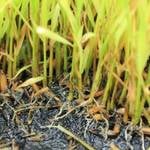
How to Grow Microgreens Seeds
Grow Guide #2934
Family: various
Binomial name: various sp.
Life Cycle: Grown as an annual
This 'How to Grow' guide details everything a home gardener needs to know to plant, grow and care for Microgreens (various sp.).
When to Sow Microgreens Seeds
Use the table below to identify the best time of year to sow microgreens seeds in your climate.
| JAN | FEB | MAR | APR | MAY | JUN | JUL | AUG | SEP | OCT | NOV | DEC | |
|---|---|---|---|---|---|---|---|---|---|---|---|---|
| Cool | ||||||||||||
| Temperate | ||||||||||||
| Sub-Tropical | ||||||||||||
| Tropical | ||||||||||||
| Arid |
Preparation
Microgreens seeds can be grown indoors or out in a position with good but not harsh sunlight. A position such as a sunny windowsill where seed trays receive a few hours of direct sunlight in the morning is ideal. Alternatively, use a grow lamp or wide-spectrum light source.
If growing outdoors, choose a protected position where seed trays will not be exposed to strong winds or very high temperatures, and protect emerging seedlings from slugs, snails and other pests.
How to Grow Microgreens
Materials
- A shallow container with drainage holes, such as a seed tray or a used fruit punnet.
- A growing medium such as seed raising mix, fine compost, potting mix or coir.
- A garden mister with filtered water.
Method
- If recommended, soak larger seeds overnight in a little warm water to speed up germination.
- Fill the container with 3-4cm of growing medium, filling it to around three-quarters of the container height. Gently press the soil to create a flat seed bed and moisten it well without drenching it.
- Sprinkle the seeds liberally but evenly over the surface. Aim for even and fairly dense coverage without the seeds actually touching.
- Cover the seeds with a thin layer of soil, no more than a few millimetres thick, pushing larger seeds gently downward beforehand if needed. Mist lightly, then cover the container with a clear lid or plastic wrap, leaving gaps for the air to circulate.
- Place the container in a sunny spot or close to a suitable light source. In poor light levels, the germinated seeds will quickly grow 'leggy' and spindly; also take care that the tender seedlings don't scorch through excessively strong direct light.
- Mist the surface at least once a day to prevent the seeds drying out, but be careful not to waterlog the soil as this risks rotting the seeds. Seeds should germinate in 3-12 days at temperatures of 8-25°C.
- Once the seeds have germinated, you can remove the container cover. Continue misting at least daily until the seedlings are ready to harvest.
How to Harvest Microgreens
Microgreens are ready to harvest in 6-30 days, once the first 'true leaves' have developed and gained a healthy colour. Depending on the plant variety, the seedlings will generally be between two and six centimetres high.
To harvest, either cut each stem with scissors just above soil level, or pull the entire seedling out, roots and all, before washing gently in filtered water and patting dry. Harvest as soon as possible before eating, as microgreens will quickly wilt and lose their flavour once cut. Microgreens can be stored for one to two days in a sealed plastic bag in the refrigerator.
Common Problems when Growing Microgreens
Like all plants, microgreens is susceptible to some pests, diseases and other problems. Below is a list of the most common problems gardeners encounter when growing microgreens plants:
 Damping off is caused by a fungal growth that transfers from the soil to seeds or tender seedlings. Seeds may appear not to germinate, or young plants start to rot when they emerge from the soil and become soft and mushy at the base before dying. Use new potting mix if raising seedlings, do not water foliage and avoid waterlogged soil. Read more about damping off here.
Damping off is caused by a fungal growth that transfers from the soil to seeds or tender seedlings. Seeds may appear not to germinate, or young plants start to rot when they emerge from the soil and become soft and mushy at the base before dying. Use new potting mix if raising seedlings, do not water foliage and avoid waterlogged soil. Read more about damping off here. Bitter taste can be caused by plants growing too slowly, suffering a setback in growth or being harvested too late. Enrich soil with aged manure before planting, ensure plants are watered deeply and regularly, and harvest when they are young and tender.
Bitter taste can be caused by plants growing too slowly, suffering a setback in growth or being harvested too late. Enrich soil with aged manure before planting, ensure plants are watered deeply and regularly, and harvest when they are young and tender.


.png)






